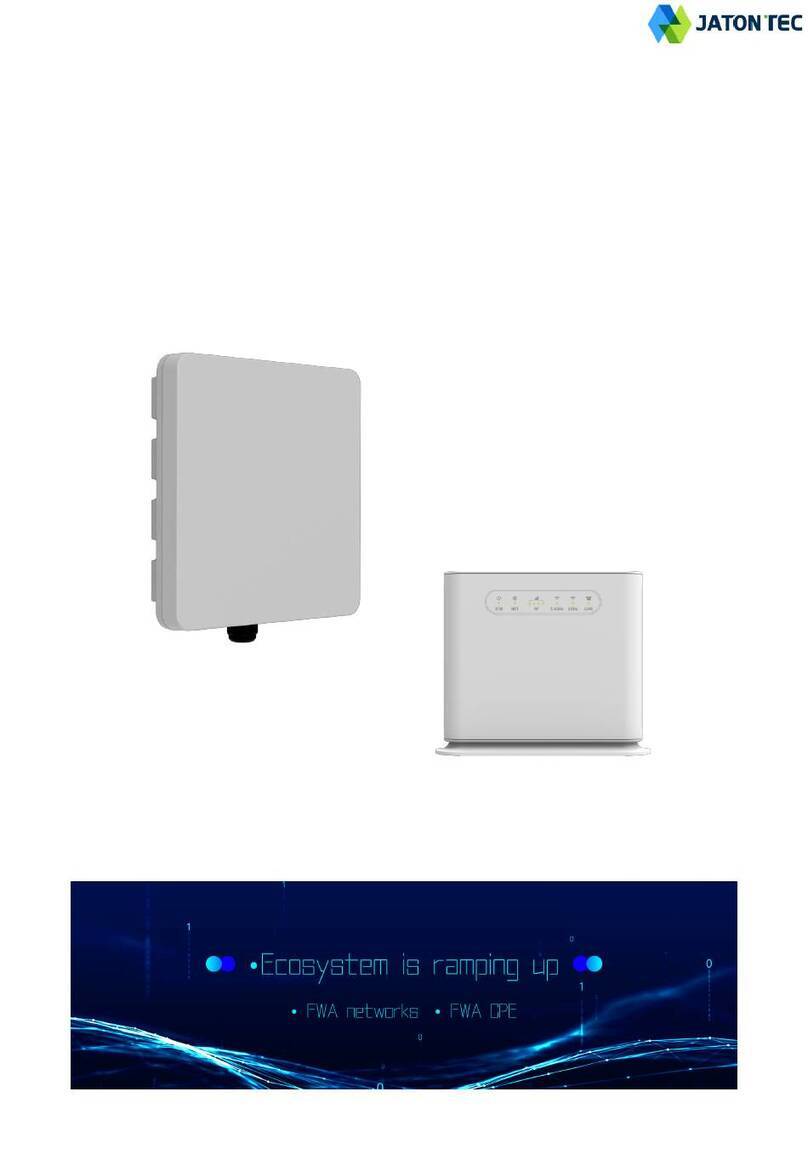
7
(IDU)
LED Function Descriptions
SYS System Indicator
Solid Orange - Device powering up and booting.
Solid Green - Normal operation.
Blinking Orange -
SIM card absent or malfunction
detected.
NET
Indicator
OFF - Not yet connected to mobile network.
Solid Green - Connected to 4G network.
RF RF Signal Strength
RF1 Blinking Green - Device searching for mobile network
entry.
RF1 Solid Green: -140dBm <= RSRP < -115dBm
RF2 Solid Green: -115dBm <= RSRP < -105dBm
RF3 Solid Green: -105dBm <= RSRP < -95dBm
RF4 Solid Green: -95dBm <= RSRP
2.4GHz 2.4GHz Wi-Fi status
OFF - 2.4GHz Wi-Fi is not enabled.
Solid Green - 2.4GHz Wi-Fi is enabled.
Fast Blinking - Data is being transmitted.
Slow Blinking - Device 2.4GHz Wi-Fi WPS is activated.
5GHz 5GHz Wi-Fi status
OFF - 5GHz Wi-Fi is not enabled.
Solid Green - 5GHz Wi-Fi is enabled.
Fast Blinking - Data is being transmitted.
Slow Blinking - Device 5GHz Wi-Fi WPS is activated.
LINE Line Status Indicator
OFF - Line is not registered or provisioned.
Solid Green - The line is ready and registered.
Fast Blinking - Line is ringing.
Slow Blinking - Voice call is in progress.





























